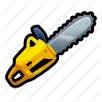12 Things to Do for Better Concrete Cutting
Concrete saws are fundamental tools for any building site. Whether you’re renovating a whole building, extending or demolishing it, you can’t do much work without a concrete saw.
Employing a concrete saw is not quite as straightforward or easy as having a hand saw. It’s a very specialised tool which needs knowledge and training.
Here I have laid out a couple of pointers that may help you improve your comprehension of working with a concrete saw.
1. Scope your worksite for places where you would like to use a saw. Ascertain if there are steel reinforcing bars in the concrete to be cut, what size is it, where is it located, and how will the rebar removal affect the structure’s stability.
2. Evaluate if there are gas, water and electrical lines in the area selected for cutting. If plumbing, cables and other plumbing exist, make sure they’ve been disconnected from the mains.
3. Unless you’re working on a small project, always have one spare concrete saw in good working condition. The same should hold for blades. You don’t have to waste time due to work stoppage if you have enough standby units.
4. If you are not the only person working with a concrete saw, make sure the other operators are trained well. Prevent deadly and expensive mistakes by instructing different people on safe and appropriate concrete saw use. Concrete saws and their blades are somewhat pricey and a little mistake can depart from your device useless.
5. Always have a variety of blades and chains on hand. A single blade can’t do all the work, which usually means you need to have a selection of blades to match the type of job that you are doing.
When you have all of the blades you need, you do not have to quit functioning. If you understand you simply need to use a single kind of blade, then it will help to have a spare one in case it has damaged or worn out.
6. Use a wet blade in case you’re working on an area in which you want to control the amount of dust flying about. If you’d prefer a cleaner or more precise cut through reinforced concrete, use diamond blades.
7. Before using a diamond blade for precision cutting, use it on an abrasive surface like concrete. This removes the protective coating on the blade, permitting you to get a cleaner and thinner cut.
8. Control the cutting depth when cutting concrete. Cut just 1–2in deep at a time. Should you apply too much pressure when cutting through the cement, then the blade will wear out too fast and the concrete saw can slow down. Be patient and gradually and steadily.
9. Always check the amount of water flowing into the area you are cutting. Too much water and the saw can veer out of control. Slurry could also flood the place, and also the aggregate from the water can wear out the diamond blade instantly.
10. Do not push too hard on the cement whilst cutting edge. Let the saw descend on its own whilst cutting through the stone. Forcing pressure on the cement found will not make it cut quicker.
11. All that cutting may take its toll on the concrete saw. Not only the pressure imposed on the blades, but the blowing dust may collect in the motor and other joints. Wash out the cement daily to ensure optimum performance and a longer lifespan.
12. Inspect the cement saw and the blade after use to be certain all elements are in working condition. Don’t use a concrete saw or a blade when it’s damaged or worn out.
